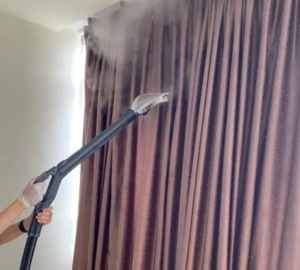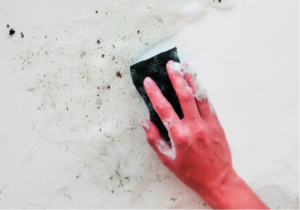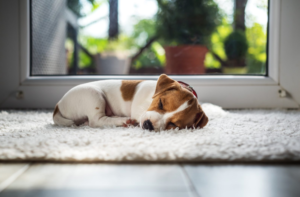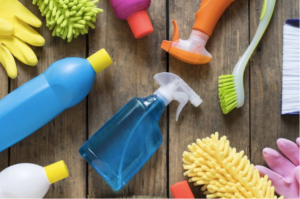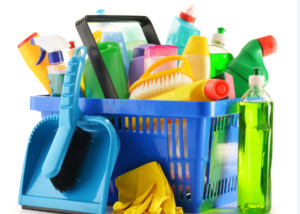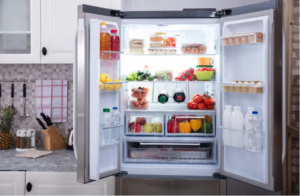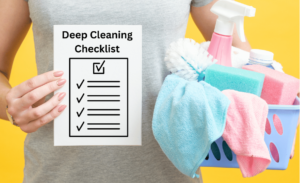
Deep Cleaning Every Room in the House
Deep Cleaning Every Room in the House Deep cleaning your home goes beyond regular tidying and surface cleaning. It involves tackling hidden dirt, dust, and grime to create a healthier and more comfortable living space. Below, we provide a detailed guide on how to deep clean different rooms in your house, along with useful tips and recommended cleaning products. 1. Kitchen The kitchen is one of the most-used areas in a home and requires special attention. Declutter and Organize Remove all items from countertops, cabinets, and drawers to clean every surface thoroughly. Discard expired food, spices, and items you no longer use to free up space. Organize utensils, cookware, and pantry items efficiently by grouping similar items together and using storage containers or dividers. Clean Appliances Refrigerator & Freezer: Remove all food, wipe down shelves with warm, soapy water, and clean the exterior with a stainless steel or multipurpose cleaner. Vacuum or wipe down the coils at the back. Oven & Stovetop: Use a degreaser for built-up grease, clean oven racks by soaking them in warm, soapy water, and scrub burner grates. Microwave: Heat a bowl of water with lemon juice for 5 minutes. The steam will loosen any food splatters which can then be easily wiped off. Dishwasher: Run an empty cycle with vinegar to remove residue and odours. Clean the filter and wipe the rubber seals. Small Appliances: Wipe down coffee makers, toasters, and blenders. Remove crumbs from toasters and clean blender blades properly. Surfaces & Cabinets Wipe down all cabinet doors and handles with a degreaser or mild cleaner to remove fingerprints and stains. Scrub countertops and backsplash with an appropriate cleaner to remove food stains and bacteria. Disinfect sink and faucets using a baking soda and vinegar mixture. Let it sit for 10 minutes before scrubbing. Floors & Trash Area Sweep and mop floors thoroughly, paying attention to corners and under appliances. Clean and sanitize trash bins inside and out. Use baking soda to neutralize odours. Sink & Drain Maintenance Scrub the sink with baking soda and rinse with vinegar. Pour boiling water down the drain to clear debris. Use a disinfectant spray to sanitize the faucet and handles. Recommended Products: Method Anti-Bac Kitchen Cleaner Krud Kutter Degreaser Dr. Beckmann Service-it Deep Clean for Dishwashers 2. Living Room A deep-cleaned living room feels fresh and inviting. Declutter and Organize Remove unnecessary items such as old magazines, unused decor, and clutter from tables and shelves. Dust and organize bookshelves, TV stands, and entertainment units by categorizing items logically. Upholstery & Fabrics Vacuum couches, chairs, and cushions, using an upholstery attachment to remove dust and pet hair. Spot-clean stains on fabric surfaces using an appropriate cleaner. Wash or dry-clean curtains and throw blankets to remove accumulated dust. Clean lampshades and decorative pillows by vacuuming or using a lint roller. Surfaces & Electronics Wipe down tables, shelves, and entertainment centres with a microfiber cloth and wood or glass cleaner. Clean TV screens and remote controls using a microfiber cloth and a solution of equal parts water and rubbing alcohol. Floors & Windows Vacuum carpets and use a steam cleaner if possible to remove deep-seated dirt. Mop hardwood or tile floors with an appropriate cleaner. Clean windows and window sills with a glass cleaner. Dust blinds and wash curtains. Recommended Products: Vax Carpet Cleaner HG Glass & Mirror Cleaner Dettol Antibacterial Surface Wipes 3. Bedroom Your bedroom should be a sanctuary of cleanliness and relaxation. Declutter & Organize Sort and organize clothing, shoes, and accessories. Use storage bins for seasonal clothing. Donate or discard items you no longer use to keep your space tidy. Bedding & Mattress Wash all bedding, including sheets, pillowcases, comforters, and mattress protectors in hot water. Vacuum and flip the mattress to prevent dust mites and extend its lifespan. Wipe down headboards and bed frames with a damp cloth. Freshen pillows by placing them in the dryer with a few tennis balls. Furniture & Surfaces Dust and polish nightstands, dressers, and desks using a microfiber cloth and wood cleaner. Clean mirrors with glass cleaner to remove fingerprints and streaks. Organize personal items and discard unnecessary clutter. Floors & Closets Vacuum carpets and mop hard floors, paying attention to under the bed and furniture. Organize closets by sorting clothing into categories. Dust shelves and clean storage boxes. Recommended Products: Lenor Fabric Freshener Astonish Antibacterial Surface Cleaner Dyson V15 Detect Vacuum Cleaner 4. Bathroom The bathroom requires regular deep cleaning to maintain hygiene. Shower & Bathtub Scrub tiles, grout, and shower walls with a mould-removing cleaner or a paste made of baking soda and water. Clean glass doors with vinegar and baking soda to remove hard water stains. Remove and wash shower curtains or replace liners to prevent mildew buildup. Sink & Countertops Scrub the sink with a disinfectant and a non-abrasive scrubber. Wipe down countertops and clean toothbrush holders with warm, soapy water. Toilet & Floors Scrub the toilet inside and out, including the base and flush handle, using a toilet brush and disinfectant. Mop the floors with a disinfectant cleaner and scrub tile grout as needed. Storage & Ventilation Declutter medicine cabinets and throw away expired products. Clean and replace air vents or exhaust fans to improve airflow. Recommended Products: Viakal Limescale Remover The Pink Stuff Bathroom Paste Astonish Mould & Mildew Remover 5. Laundry Room Laundry rooms can gather lint, dust, and detergent residue. Washer & Dryer Clean washer drum with a cycle of vinegar and baking soda to remove detergent buildup. Remove lint from dryer vents and filters to prevent fire hazards. Storage & Organization Organize detergents, softeners, and cleaning supplies neatly on shelves. Wipe down shelves and cabinets to remove dust and spills. Floors & Surfaces Sweep and mop the floor thoroughly, paying attention to corners. Wipe down countertops and appliances to remove dust and lint. Recommended Products: Afresh Washing Machine Cleaner (to


